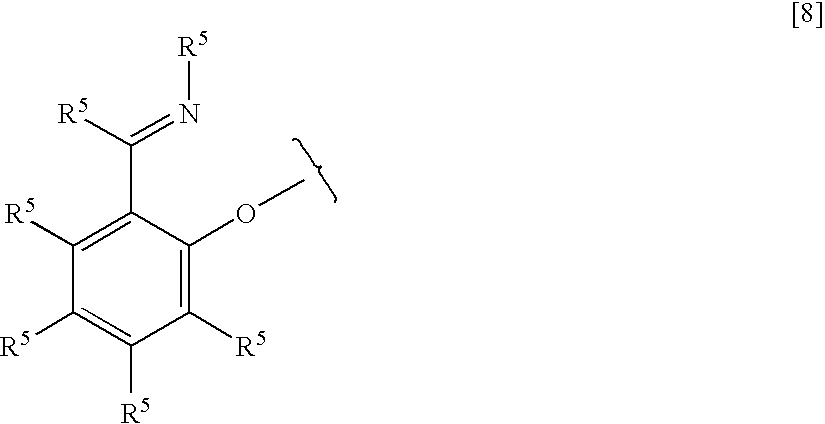Process for producing modified particle; carrier; catalyst component for addition polymerization; process for producing catalyst for addition polymerization; and process for producing addition polymer
a technology of catalyst and catalyst polymerization, which is applied in the direction of catalyst activation/preparation, physical/chemical process catalyst, catalyst component for addition polymerization, etc., can solve the problems of small molecular weight regulator and large amount of hydrogen in polymer produced with a large amount of hydrogen
- Summary
- Abstract
- Description
- Claims
- Application Information
AI Technical Summary
Problems solved by technology
Method used
Image
Examples
example 1
(1) Pretreatment of Silica
[0209]Silica manufactured by Davison Co., Ltd., which has a tradename of SYLOPOL 948, a lot number of SMR49-3266, an average particle diameter of 60 μm, a pore volume of 1.70 ml / g, and a specific surface area of 292 m2 / g, was heated at 300° C. in a stream of nitrogen, thereby obtaining a heat-treated silica. Into a four-necked 3-liter flask, 106 g of the heat-treated silica was put, wherein air contained in the flask had been replaced with nitrogen. Next, 1.0 liter of toluene was added thereto under washing down the heat-treated silica adhering to a wall of the flask.
[0210]The resultant mixture was cooled to 5° C., and then, a solution of 44 ml of 1,1,1,3,3,3-hexamethyldisilazane dissolved in 58 ml of toluene was dropped thereinto over 30 minutes. The obtained mixture was stirred at 5° C. for one hour, and at 95° C. for three hours, respectively. The resultant reaction mixture was filtered, and the obtained solid was washed four times with each one liter of...
example 2
(1) Production of Catalyst Component for Addition Polymerization
[0221]Example 1 (2) was repeated except that (1) 5.02 g of the component (d1) was changed to 5.03 g thereof, and (2) 0.74 g of of a methylboronic acid powder was changed to 1.95 g of a zirconium hydroxide powder, thereby obtaining 8.69 g of a catalyst component for addition polymerization, which is hereinafter referred to as the “component (A2)”.
(2) Polymerization
[0222]Example 1 (3) was repeated except that (1) 6.0 mg of the component (A1) was changed to 7.3 mg of the above-mentioned component (A2), (2) the gas chromatography analysis showed a gas composition in the system of 1.10% by mol of hydrogen, and 2.57% by mol of 1-butene, and (3) the mixed gas of ethylene and hydrogen continuously fed had a hydrogen concentration of 0.41% by mol.
[0223]As a result, 126 g of an olefin polymer having a good particle property was produced. A polymerization activity per mol of a zirconium atom was 1.3×108 g / mol-Zr / hour, and that per...
example 3
(1) Production of Catalyst Component for Addition Polymerization
[0232]Example 1 (2) was repeated except that (1) 5.02 g of the component (dl) was changed to 5.03 g thereof, and (2) 0.74 g of a methylboronic acid powder was changed to 2.65 g of diphenylsilanediol powder, thereby obtaining 5.35 g of a catalyst component for addition polymerization, which is hereinafter referred to as the “component (A3)”.
(2) Polymerization
[0233]Example 1 (3) was repeated except that (1) 6.0 mg of the component (A1) was changed to 6.0 mg of the above-mentioned component (A3), and (2) the gas chromatography analysis showed a gas composition in the system of 1.11% by mol of hydrogen, and 3.29% by mol of 1-butene.
[0234]As a result, 9 g of an olefin polymer was produced. A polymerization activity per mol of a zirconium atom was 9.0×106 g / mol-Zr / hour, and that per g of the solid catalyst component was 1,500 g / g-solid catalyst component / hour. The olefin polymer had SCB of 10.0, MFR of 2.4 g / 10 minutes, MFRR ...
PUM
| Property | Measurement | Unit |
|---|---|---|
| valence | aaaaa | aaaaa |
| homogeneity | aaaaa | aaaaa |
| molecular weight | aaaaa | aaaaa |
Abstract
Description
Claims
Application Information
 Login to View More
Login to View More - R&D
- Intellectual Property
- Life Sciences
- Materials
- Tech Scout
- Unparalleled Data Quality
- Higher Quality Content
- 60% Fewer Hallucinations
Browse by: Latest US Patents, China's latest patents, Technical Efficacy Thesaurus, Application Domain, Technology Topic, Popular Technical Reports.
© 2025 PatSnap. All rights reserved.Legal|Privacy policy|Modern Slavery Act Transparency Statement|Sitemap|About US| Contact US: help@patsnap.com


